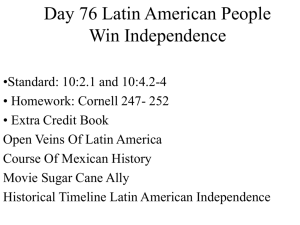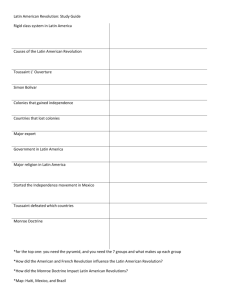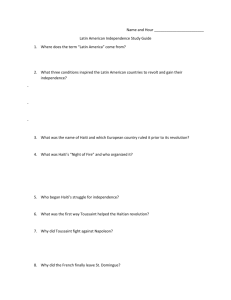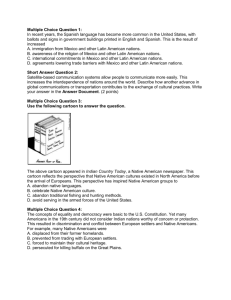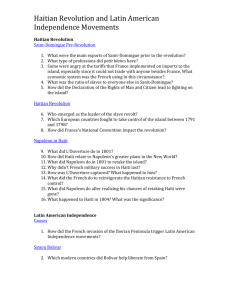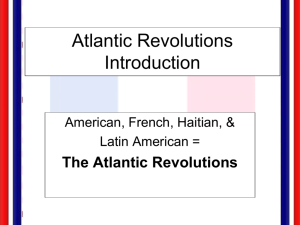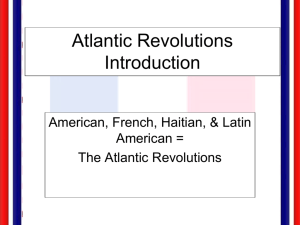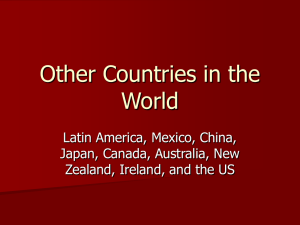Latin America - Fort Thomas Independent Schools
advertisement
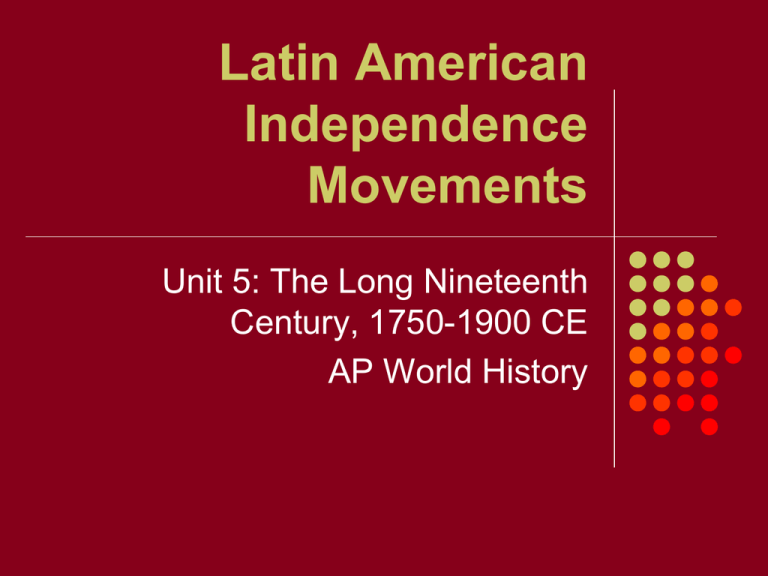
Latin American Independence Movements Unit 5: The Long Nineteenth Century, 1750-1900 CE AP World History Haitian Revolution Began on August 22, 1781 Slave uprising against the French Francois Dominique Toussaint L’Ouverture organized a small military group In order to overcome powerful countries wanting to claim Haiti (France, England, and Spanish) Toussiant played powers off of one another, finally allying with French Haitian Revolution Napoleon’s rule resulted in Toussiant’s death Jean-Jacques Dessalines was former slave who took over General Leclerc sent by Napoleon to deal with Haitians, bloody battles occurred Ended on November 28, 1803 Legacy of Haitian Revolution Symbol of freedom and hope to the rest of slaves in North America Slave owners became aware of chance of rebellion of slaves Slave shelters built by slave owners in case of an uprising Latin America - Mexico 1810 – Father Hidalgo (Catholic Priest) wanted political freedom, to end slavery, and improve living conditions for Mexico’s poor Leads Native Americans & mestizos in armed movement 1811 – insurrection is put down by Spanish army Hidalgo is captured and executed Latin America - Mexico 1813 – Jose Maria Morelos (Catholic priest) declares independence; takes over after Hidalgo Captures large portion of southern Mexico 1815 – is ultimately defeated by the Spanish & executed Revolution now controlled by creole landowners Latin America - Mexico 1821- full independence is granted after creoles declare independence Led by Augustin de Iturbide Made himself emperor Was deposed in 1823 Mexico declares itself a republic in 1823 Costa Rica, El Salvador, Guatemala, & Honduras soon follow Mexico – unique because of lack of immigrant population Latin America - Mexico 1876 – Porfirio Diaz begins 35 year rule of Mexico (eliminated opposition, but encouraged economic growth) 1910 – Middle class begins movement for election reform – escalates into 10 year rebellion (Mexican Revolution) 1921 – New constitution written – limited foreign investment, restricted church ownership of property, & education reform Latin America – South America 1810 - Simon Bolivar (Creole from Venezuela) – known as “the liberator” starts a revolt in northern South America Leads to independence of Venezuela, Colombia, Panama, Bolivia, & Ecuador 1826 – all of Spanish South America has been liberated by Bolivar Latin America - Brazil 1808 – Napoleon invades Portugal –royal family flees to Brazil (monarchy is transferred) Former king was a liberal ruler brought reforms in education, military academies, art & medicine Rio de Janeiro is made the capital Dom Pedro (son of João) rules after King returns to Portugal September 1822 – won full independence and chooses constitutional monarchy as form of government Did not have to endure a prolonged, bloody revolution Latin American – 19th Century Problems Geography – hindered trade, commerce, transportation and economy Colonial heritage – not ready for independence Rigid Social Order Catholicism dominated daily life
